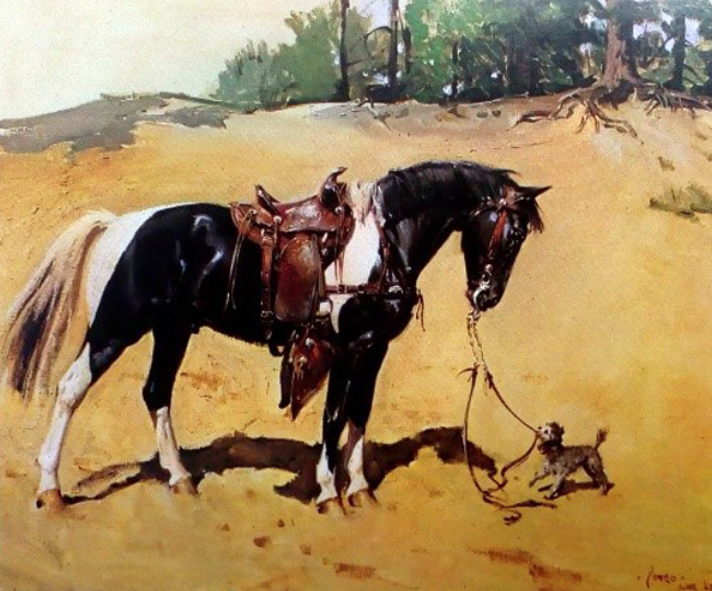Terence Cuneo

December 16th, 2022
Category: Founding Members
Terence Cuneo was born in London in 1907, the son of Cyrus Cuneo and Nell Tenison (Cuneo). They were both noted artists who had met while studying in Paris. Cyrus Cuneo produced some work in oil and watercolour, but was mostly employed as an illustrator for magazines and periodicals, in the days before photography was more common. Sadly, Cyrus died when Terence was ten years old, as a result of blood poisoning, but not before the boy had experienced life in the artist’s studio.
Terence Cuneo’s mother Nell moved to Cornwall, where the artist spent many happy childhood years. She painted, as well as restoring buildings, and later in life returned to London where she died in 1953.
From Cornwall, the young Terence was sent to boarding school, Sutton Valence School in Kent, and then studied art at Chelsea Polytechnic and the Slade School of Art, before following his father in the late 1920’s and 1930’s as working as an illustrator for magazines, books and periodicals.
In 1936 he started working in oils, continuing with his illustration work. During World War II he served in the Royal Engineers. His talent was recognised by the Army and he also completed a small number of commissions for the War Artists’ Advisory Committee, providing illustrations for example of tank and aircraft factories.
After the war, Cuneo was commissioned to produce a series of works illustrating railways, bridges and locomotives. These commercial works adorned Director’s offices and Boardrooms, as well as illustrating calendars and company publications.
A significant point in his career was his appointment as official artist for the Coronation of Elizabeth II, which brought his name before the public worldwide. He received other commissions from industry, which included manufacturing, mining and road building. He also undertook private commissions, ranging from portraiture to landscapes.
But arguably he was most famous for his paintings of locomotives and the railway as a whole, as well as military art. His regimental commissions, battle scenes and incidents as well as portraits (including H.M. the Queen) only enhanced his already good reputation, and for many he was the ‘go-to’ artist. Many admirers also regard him as the one of the greatest equestrian artists of the 20th century.
While having a break in painting at his home, a cat bought in a dead mouse, which he posed and began to sketch. This was the start of his ‘signature’ mouse work. From 1954 many works included a small mouse, sometimes lifelike, sometimes cartoonish. They can be difficult to detect, and many people enjoy scouring his paintings to find one. Additionally, Terence Cuneo painted a series of mouse pictures, with the characters portrayed as human, often historic, figures.
His work has been used from book jackets and model railway catalogues to posters and jigsaws and even postage stamps. His work can also be found in many museums, Officers’ Messes, and galleries, including Guildhall Art Gallery, Lloyd’s of London and the Royal Institution.
Cuneo was awarded the OBE and was a Companion of the Victorian Order. A larger than life size bronze memorial statue of Cuneo, by Philip Jackson, stood in the main concourse at Waterloo station in London for many years, and is now relocated to Brompton Barracks, Chatham.
Terence Cuneo is estimated to have painted more than seven thousand pictures in his lifetime. He passed away in 1996.
Images and text reproduced with kind permission of ‘The Cuneo Estate’


Categories
Recent Posts
- EQUINE DRAWING MASTERCLASS 26/04/2024
- Northumberland Workshop 2024 27/02/2024
- Workshops 2024 19/02/2024
